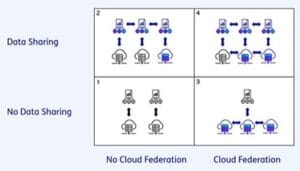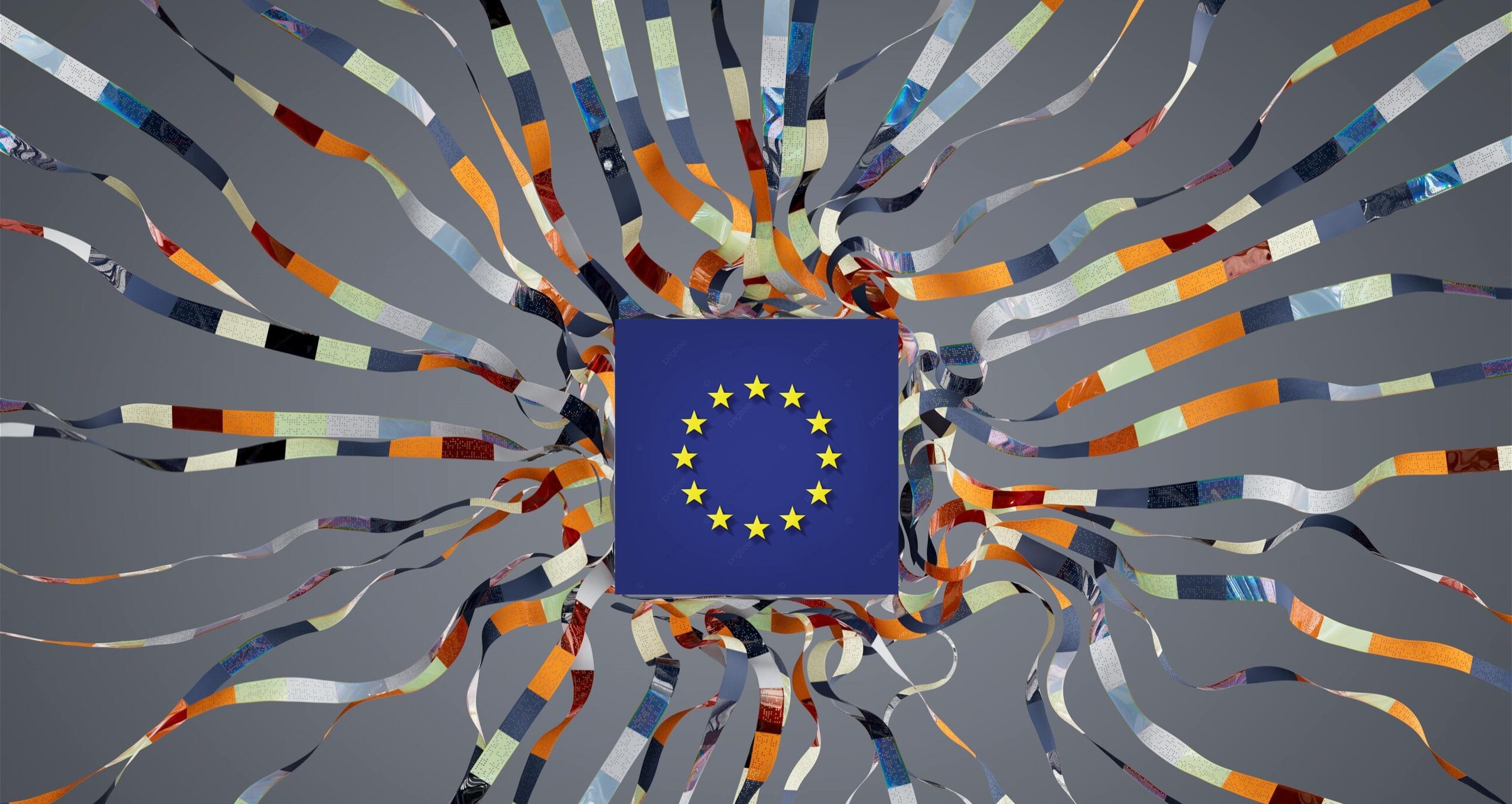In Europe, a lot of developments are taking place around cloud infrastructure, since this is key for applications that process and access large amounts of data. Recently, we had a conversation about this topic with Erik Langius, Senior Integrator & Project Manager at TNO. He explained that Europe highly depends on the cloud infrastructure provided by American hyperscalers for data processing, which creates lock-in effects and doesn’t create a level playing field. To offer ‘sovereign’ cloud services in Europe, cloud portability is key. That is why Europe is moving towards a federated cloud infrastructure, which enables organisations to store and process their data across several cloud providers. What is the status of these cloud developments in Europe and the Netherlands specifically? We spoke with Bjorn Hakansson, cloud lead at the CoE-DSC and Senior Business Development Manager at TNO.
Main concerns
Major societal innovation challenges require some form of data sharing, e.g. smart energy, smart cities, and smart mobility. “However, there have been three main concerns”, says Bjorn. “Firstly, about the ever increasing dominance of non-EU players in the cloud service provider market in the EU. Secondly, the increasing use of data and AI. And last but not least, concerns over legal protection for data stored at non-EU cloud service providers. This is why Gaia-X was established. Gaia-X wants to provide more transparency about which data and cloud providers meet certain norms and standards, in the hope the market will choose to work with these trusted parties.”
Bjorn continues: “Europe has certain needs and realises that we can’t just turn to the large hyperscalers for everything. There is EU interest in Gaia-X and there are various use cases that demonstrate this. For example, we want to have European data spaces so we are able to share data with parties in other European countries and use and combine data in an interoperable way. Cloud interoperability is another example. Organisations might want to switch from cloud provider, but this is not easy today due to lack of common standards and interoperability. Interoperability would also enable the bundling of resources, for example for a temporary computing scale-up or for moving your workloads to other cloud providers in the EU.”
Data and cloud developments in the EU and the Netherlands
There are many projects related to data and cloud and multiple players with different roles, both on a European level as well as on a national level in the Netherlands. For example, there are compliance and trust frameworks, like Gaia-X. And there are projects like SIMPL which addresses the data ecosystem, and IPCEI-CIS which addresses the cloud ecosystem. Bjorn elaborates on this last one: “IPCEI-CIS, which stands for Important Project of Common European Interest – Cloud Infrastructures and Services, received €1.2 billion of government funding. Combined with the private funding, it comes down to €2.6 billion. In the EU, more than 100 organisations from 12 member states are contributing to one integrated project IPCEI-CIS with their individual projects to shape the European cloud infrastructure of the future.”
“Within IPCEI-CIS, the Netherlands is funding three projects with a total of €70 million,” Bjorn continues. “These are MISD (Modular Integrated Sustainable Datacenter), ECOFED (European Cloud services in an Open Federated ecosystem), and European Cloud Campus, for the development of European cloud infrastructure and services. TNO is involved in the first two projects, which is very exciting. We work on translating European ideas and developments into Dutch activities. We are working to get interoperability and cooperation between cloud providers to a whole new level. To clarify,” Bjorn adds, “Gaia-X does not work directly with IPCEI projects, but there are many similarities as many companies are active in both initiatives, and the visions for the future largely align as well.”
“The ECOFED project is interesting, because its objective is to develop a technical basis for a more open cloud usage model, facilitating interoperability, federation and switching between providers. In the current model, the application, platform and cloud service provider layers are vertically integrated. With ECOFED, we want to create a federated multi-cloud model in which a federation middleware layer is added, so that horizontal integration is possible thanks to open source software. This way, an application can work across different cloud service providers. There is a lower risk of lock-in effects due to easier cloud switching and more flexible capacity scaling through cloud federation without the intervention of one central provider.”
Data sharing and cloud federation: four scenarios

Data federation (or data sharing) and cloud federation are important concepts. Bjorn explains: “Data sharing builds upon data federation in European data spaces, for example on top of a cloud infrastructure. Cloud federation enables workload shifting or resource expansion in a federation of different cloud providers.
There are four scenarios. In scenario 1, which was the initial situation, there is no data sharing and no cloud federation. Now, many companies are sharing data, as can be seen in scenario 2. Although they can share data, it is stored with different cloud providers which doesn’t change anything about the dominance of US hyperscalers. With ECOFED, we are working on scenario 3 to enable cloud federation (and thus interoperability). And we hope to get to scenario 4, where we can share data on top of a federated cloud and users have a choice. They can decide whether it’s okay if the underlying cloud infrastructure is an American one, or if they only want to share data using European providers.”
What can organisations do now?
Bjorn speaks with a lot of parties and discovered that they are interested in the current cloud developments. “They find it interesting to hear about the developments and they are curious about Gaia-X, but it’s difficult to do something concrete in the short term.” So what can they do and decide on right now? “They can stay up to date with the developments and see if they want to pursue a Gaia-X label or set up a digital clearing house – what do they need for this, how does it work? Or they can participate in trials.”
“However,” Bjorn continues, “the question is still: what is the return on it, does it benefit you? Various players are interested and we only need one cloud provider to be the first. If the government says they are going to choose a cloud provider with a Gaia-X label, the first cloud providers can set procurement terms. So: do you want to wait and risk being late? Or will you be in the lead, be one of the frontrunners?”
Community Meeting September 25th 2024
On Wednesday afternoon September 25, 2024, we organised a Community Meeting in Utrecht, powered by Topsector ICT. The topic of this meeting was Gaia-X and the Gaia-X Digital Clearing House (GXDCH). Bjorn was one of the keynote speakers. Discover the slides here.




